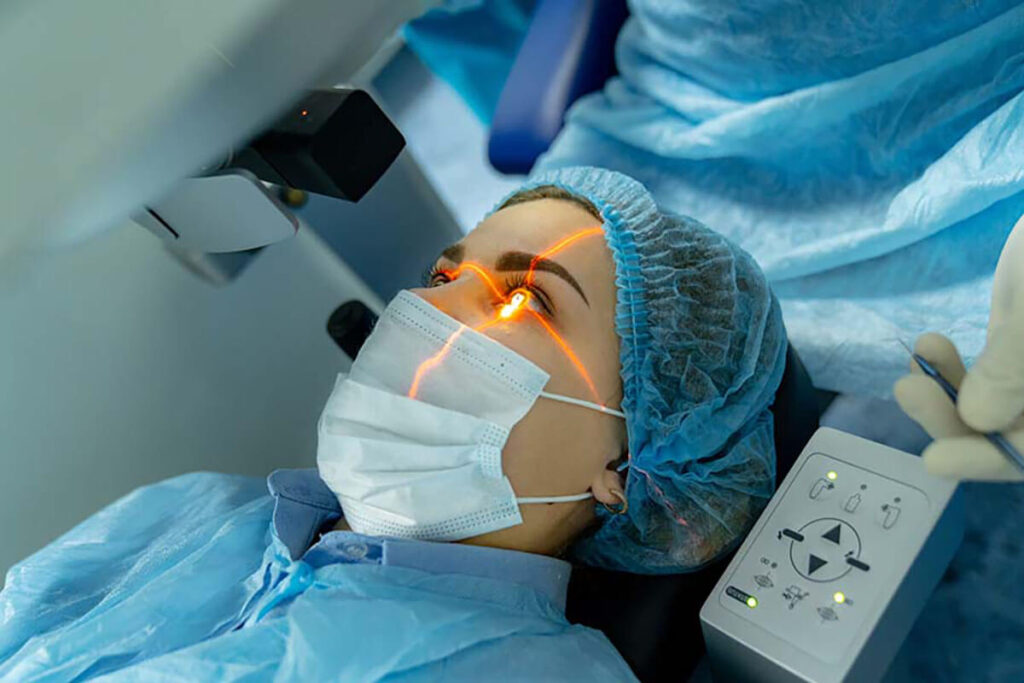Cataracts are a common eye condition that affects millions of people worldwide. As the primary cause of vision impairment in older adults, understanding cataracts is crucial for those seeking clarity and relief from blurred vision. This article delves into the nature of cataracts, the symptoms to watch for, the treatment options available, and what one can expect during the recovery process following surgery.
Understanding Cataracts
Cataracts form when proteins in the lens of the eye clump together, leading to a clouding effect that obstructs vision. This condition can develop slowly over the years and may start with minor symptoms that often go unnoticed. Factors contributing to cataract formation include age, prolonged exposure to UV light, certain medications, and underlying health conditions like diabetes. In fact, studies have shown that individuals with diabetes are at a higher risk for developing cataracts earlier than those without the condition, emphasizing the importance of managing blood sugar levels to potentially delay onset.
Preparing for cataract surgery involves several steps. It is essential to discuss your health history and any medications you are taking with your surgeon. They may provide guidance on which medications to continue or discontinue leading up to the surgery. In some cases, patients may be advised to stop taking blood thinners or other medications that could increase bleeding risks during the procedure.
In essence, cataracts can be described as a gradual degenerative process. The lens, which is responsible for focusing light onto the retina, begins to lose its transparency. As a result, individuals may experience an array of vision problems, such as difficulty seeing at night, increased sensitivity to glare, double vision, and a gradual fading of colors. Interestingly, some people may also notice that their vision improves temporarily for near tasks, a phenomenon known as “second sight,” before the cataract progresses further and vision deteriorates.

Symptoms of Cataracts
The symptoms associated with cataracts can vary from person to person. Commonly reported signs include blurred or cloudy vision, a noticeable difficulty reading or performing tasks that require sharp eyesight, and the appearance of halos around lights. As the condition progresses, many individuals find it increasingly challenging to handle daily activities like driving, especially at night. This can lead to a sense of frustration and helplessness, as familiar tasks become daunting challenges.
Moreover, people with cataracts may find that their prescription glasses or contact lenses become ineffective over time. These changes can be frustrating and can significantly impact one’s quality of life. Recognizing these symptoms early on can provide a better opportunity for effective treatment and intervention. It is also worth noting that lifestyle changes, such as wearing sunglasses to protect against UV rays and maintaining a healthy diet rich in antioxidants, may help slow the progression of cataracts and promote overall eye health.
Diagnosis of Cataracts
If you suspect that you may have cataracts, the first step is to consult an eye care professional. A comprehensive eye examination will typically include tests to assess your visual acuity and examine the lens and other components of your eye. Your doctor may use a slit lamp to get a detailed view of your eye’s structure and to determine the extent of the clouding. Additionally, they may perform a tonometry test to measure the pressure inside your eye, as elevated pressure can indicate other eye conditions that may need to be addressed.
During the diagnostic process, your eye care provider will also inquire about your medical history and any family history of eye conditions. Based on the findings, they can provide tailored recommendations for managing your cataract symptoms or planning for surgery if necessary. It is essential to have open discussions with your healthcare provider about any concerns you may have, as they can help guide you through the options available, including lifestyle modifications and potential surgical interventions that can restore clarity to your vision. Read more about symptoms on https://medlineplus.gov/symptoms.html
Treatment Options for Cataracts
The treatment for cataracts often depends on the severity of the symptoms and the impact on one’s daily life. Initially, non-surgical options like stronger glasses or magnifying lenses may help aid in vision correction. However, as cataracts progress, surgery typically becomes the most effective solution.
Cataract surgery involves removing the cloudy lens and replacing it with a clear artificial lens, known as an intraocular lens (IOL). This procedure is one of the most commonly performed surgeries worldwide and has a high success rate, offering patients significant improvements in their vision. Many patients experience a dramatic enhancement in their quality of life post-surgery, as they can resume activities that were previously hindered by their vision impairment, such as reading, driving, and enjoying nature.
Preparing for Cataract Surgery
Additionally, pre-operative testing is often conducted to determine the appropriate type of lens to be implanted during the surgery. Results from these assessments will help ensure optimal visual outcomes and minimize risks during the procedure. Patients may also be instructed to arrange for a ride home after surgery, as the effects of the anesthesia can linger, and it’s important to have someone available to assist with post-operative care and follow-up appointments.
The Surgery Procedure
Cataract surgery is typically performed on an outpatient basis, making it convenient for patients. The procedure usually lasts about 20 to 30 minutes, during which the patient is given a local anesthetic to numb the eye. This allows the patient to remain awake and aware, while still feeling comfortable and relaxed throughout the process.
The surgeon will utilize modern techniques, often employing phacoemulsification, where ultrasound waves are used to break up the cloudy lens into small pieces for easy removal. After the old lens is taken out, the intraocular lens is inserted. The IOL comes in various types, including monofocal, multifocal, and toric lenses, each designed to address specific vision needs. Patients should discuss the options with their surgeon to determine which lens type best suits their lifestyle and visual requirements.
There is minimal discomfort during the surgery, and most patients report feeling a sense of relief and improved clarity soon after the procedure. Post-operative care is crucial, and patients are usually provided with eye drops to prevent infection and inflammation. Follow-up visits are scheduled to monitor healing and ensure that the new lens is functioning correctly, allowing patients to enjoy their restored vision fully. Click here to find more about inflammation.
Recovery After Cataract Surgery
The recovery process following cataract surgery is typically swift and straightforward. Patients may be prescribed eye drops to help with healing and to prevent infection. It is important to follow the aftercare instructions provided by the surgeon to ensure a smooth recovery.
Most individuals notice improvements in their vision within a few days following the surgery. However, full recovery can take several weeks, during which time the eyes will adjust to the new lens. Patients are usually advised to avoid strenuous activities and to refrain from rubbing their eyes during this recovery period.

Post-Operative Care Tips
Adhering to post-operative care tips is essential for optimal healing. This includes attending follow-up appointments to monitor the healing process, using prescribed medications as directed, and protecting the eyes from bright lights. Wearing sunglasses outdoors can help ease discomfort and protect against glare.
Additionally, patients should be aware of signs indicating complications, such as increased redness, pain, or sudden changes in vision, and should seek immediate medical attention if these occur. Maintaining a clean environment and avoiding exposure to dust and smoke can also play a significant role in preventing irritation and promoting healing.
The Long-Term Outlook
Most patients experience remarkable improvements in vision post-surgery and can resume their regular activities with ease. While some may still require glasses for specific tasks, such as reading, the overall enhancement in quality of life can be substantial. Regular eye examinations after surgery are recommended to track eye health and address any additional changes that may develop over time.
Understanding and addressing cataracts through surgery can significantly enhance one’s ability to enjoy life. With advancements in surgical techniques and a supportive healthcare team, individuals can regain the clarity they might have lost due to this condition. Furthermore, many patients report a newfound appreciation for activities they once found challenging, such as driving at night or reading fine print, which can lead to a more fulfilling lifestyle.
The emotional aspects of recovering from cataract surgery should not be overlooked. Many individuals experience a sense of relief and joy as their vision improves, which can positively impact their mental well-being. Engaging in social activities and reconnecting with loved ones can also be an important part of the recovery journey, as improved vision often encourages individuals to participate more fully in their communities and hobbies.
In conclusion, cataracts can affect anyone; thus, awareness of symptoms, timely diagnosis, and effective treatment options are crucial for maintaining vision health. If you suspect you have cataracts, or if it’s been a while since your last eye exam, consider reaching out to a healthcare professional for guidance and support.
Other resources: Cataract Surgery Cost What to Expect in Australia



